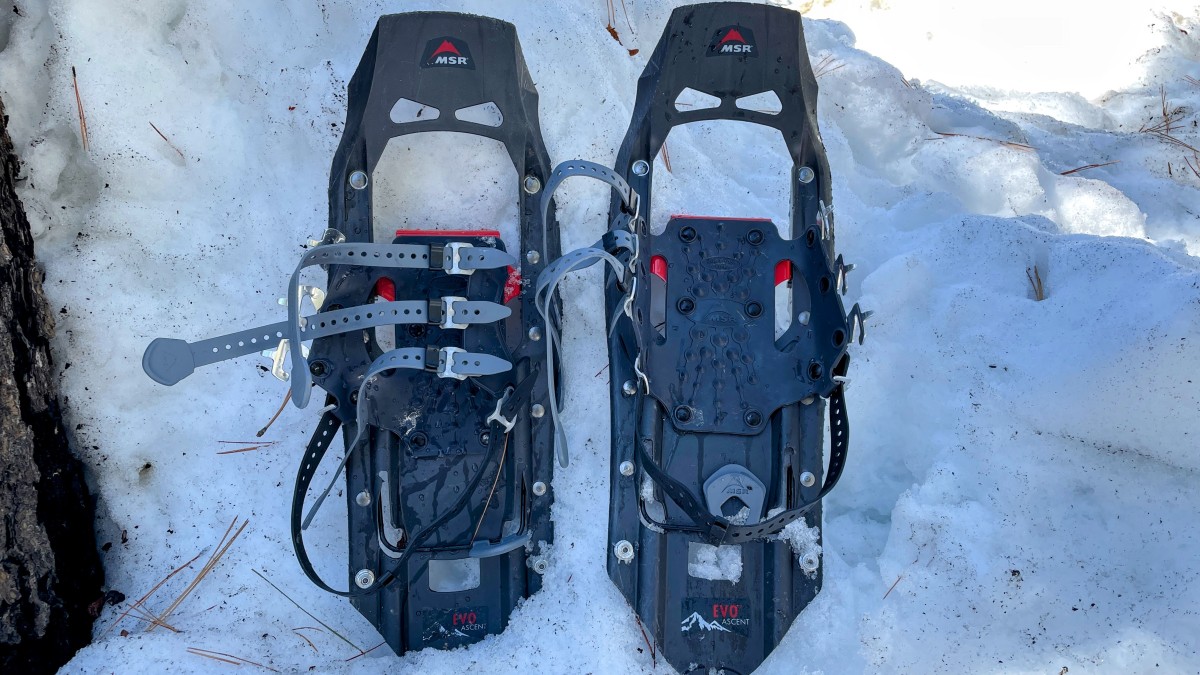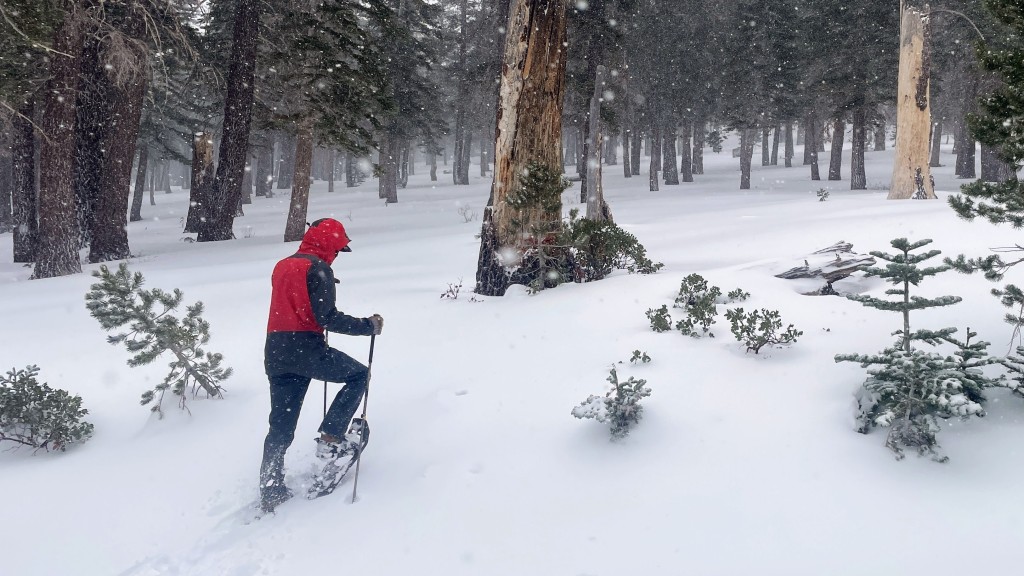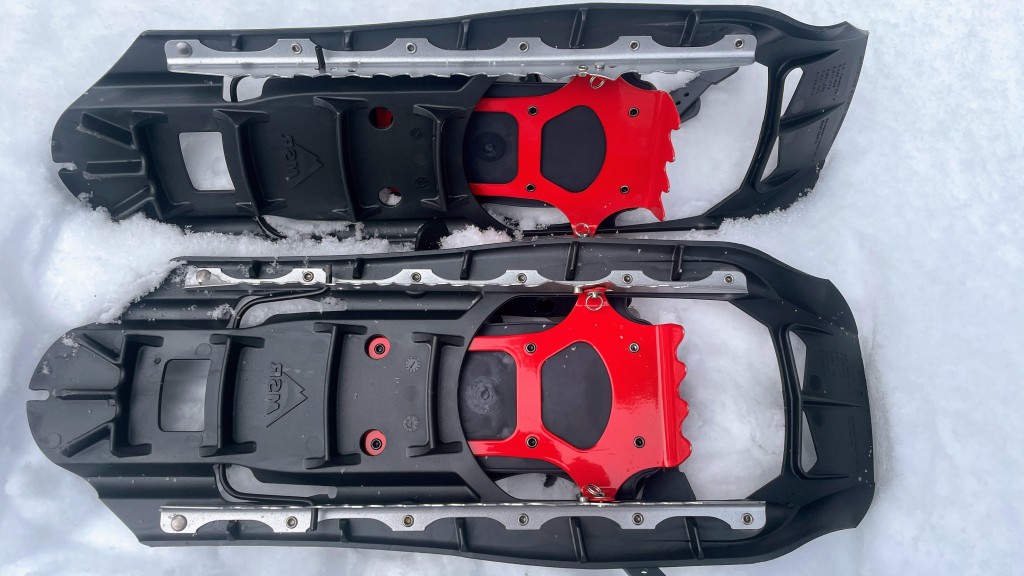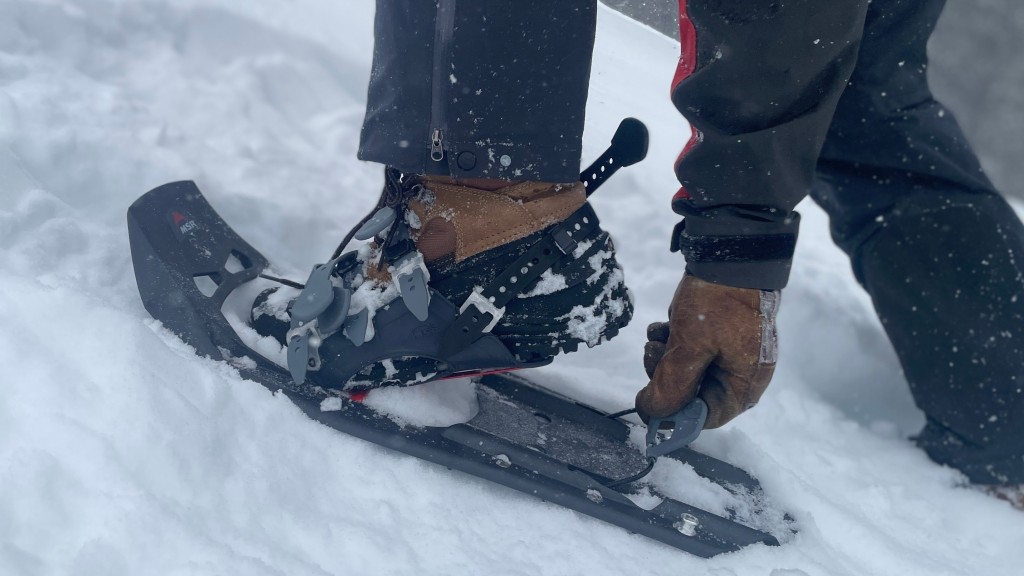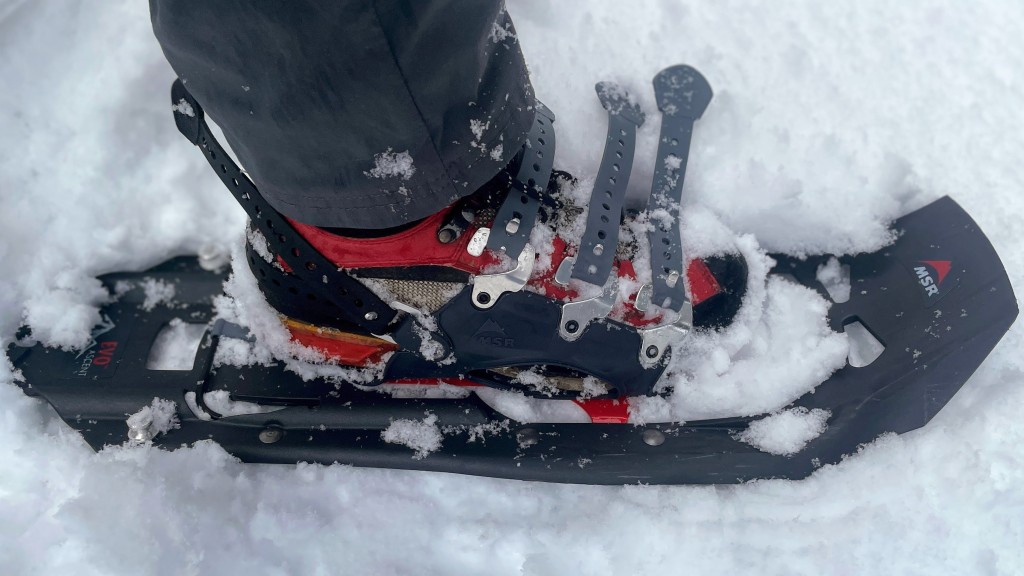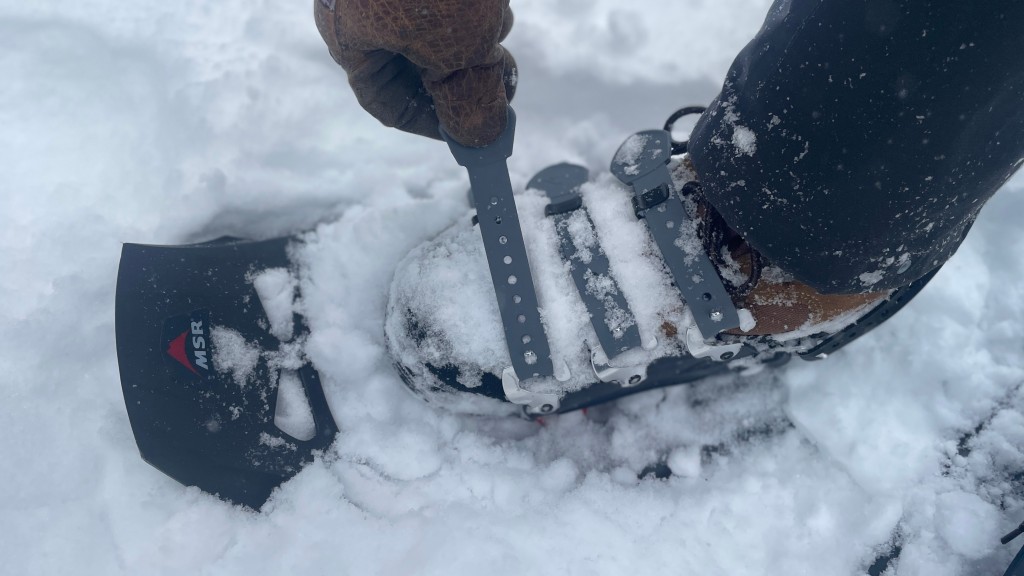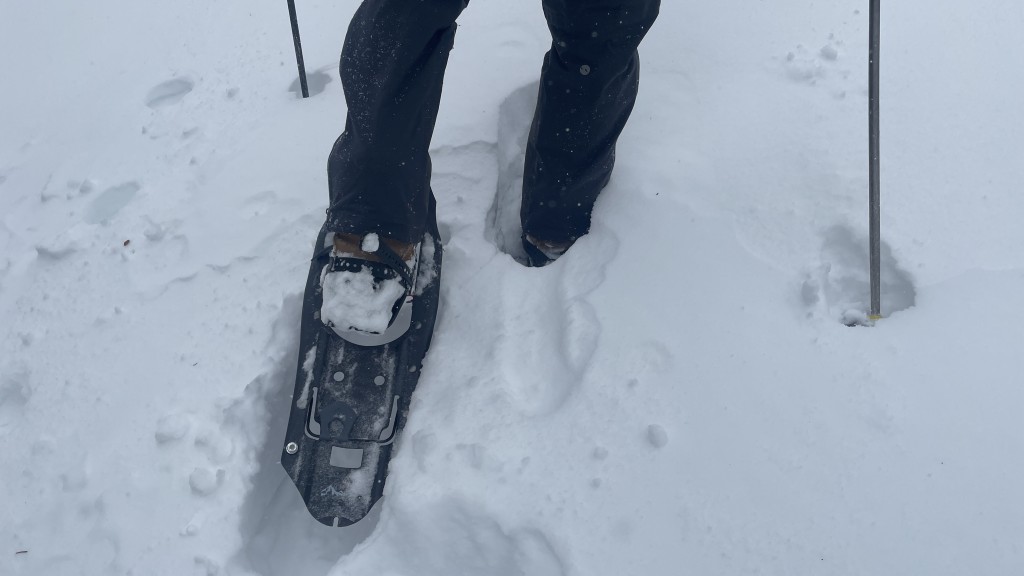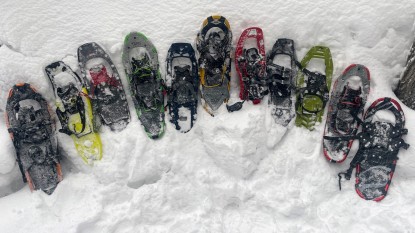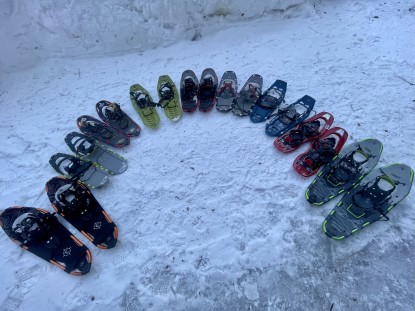Our Verdict
Compare to Similar Products
 This Product
MSR Evo Ascent | |||||
|---|---|---|---|---|---|
| Awards | Best Overall Snowshoes | High Performance Affordability | Best for Fresh Deep Snow | Best on A Tight Budget | |
| Price | $239.95 at REI Compare at 3 sellers | $389.95 at REI Compare at 4 sellers | $169.95 at REI Compare at 3 sellers | $220 List $175.95 at Amazon | $80 List $93.99 at Amazon |
Overall Score  |
|||||
| Star Rating | |||||
| Bottom Line | Though they're not a great choice for deep fresh snow, these do everything else well and are simple and durable | Our overall champ combines simplicity and high-quality materials, features, and engineering | This reliable and well-priced snowshoe is versatile and easy to use | A good choice for off trail travel and softer snow | Most cheap snowshoes have poor bindings, but we found the G2 to be comfy and secure |
| Rating Categories | MSR Evo Ascent | MSR Lightning Ascent | MSR Evo Trail | Crescent Moon Big S... | G2 Ratchet Binding |
| Flotation (30%) | |||||
| Traction (30%) | |||||
| Walkability (20%) | |||||
| Bindings (20%) | |||||
| Specs | MSR Evo Ascent | MSR Lightning Ascent | MSR Evo Trail | Crescent Moon Big S... | G2 Ratchet Binding |
| Measured Weight (per pair) | 3.9 lbs | 4.0 lbs | 3.7 lbs | 5.1 lbs | 4.5 lbs |
| Sizes Available | 22" (one size) | 22", 25", 30" | 22" (one size) | 32" (one size) | 22", 25", 30", 36" |
| Binding System | Rubber straps with pin-in-hole | Rubber net and straps with pin-in-hole | Rubber net and straps with pin-in-hole | Rubber straps with plastic buckles | Ratchet straps with plastic buckles, EVA padding, rubber tension straps |
| Frame Material | Plastic and steel | Aluminum | Plastic and steel | Aluminum | Aluminum |
| Measured Surface Area | 183 sq in | 188 sq in | 183 sq in | 256 sq in | 225 sq in |
| Measured Dimensions | 24"L x 8"W | 25"L x 8"W | 24"L x 8"W | 32"L x 10"W | 31"L x 9"W |
| Binding/Deck Connection | Hinged | Hinged | Hinged | Strapped | Hinged |
| Crampon/Traction Aids | Steel crampons, rails, and teeth | Steel crampons, rails, and teeth | Steel crampons and rails | Steel crampons | Aluminum crampons and teeth |
| Deck Material | Polypropylene | TPU coated Nylon | Polypropylene | Polyurethane fabric | Polyethylene fabric |
| Heel Lift | Yes | Yes | No | Optional | Yes |
| Flotation Tails Sold Separately? | Yes | Yes | Yes | No | No |
| Men's and Women's Versions? | Unisex | Yes | Unisex | Yes | Unisex |
| Optimum Weight Load (per manufacturer) | up to 180 lbs | up to 180 lbs (size 22") 120-220 lbs (size 25") 150-280 lbs (size 30") |
up to 180 lbs | up to 225 lbs | up to 150 lbs (size 21") up to 200 lbs (size 25") up to 250 lbs (size 30") up to 300 lbs (size 36") |
| Tested Size | 22" | 25" | 22" | 32" | 30" |
Our Analysis and Test Results
MSR has been a leader in plastic snowshoes for over 20 years, and they've been making some version of the Evo Ascent that entire time. Over the years, the design has changed very little. While it's starting to feel a bit dated now, our testers think it's a case of, “if it ain't broke, don't fix it.”
Performance Comparison
Flotation
This metric is the reason you're reading this review. The primary quality that determines flotation is the number of square inches the deck provides. The Evo Ascent has about 183 square inches of flotation. This is on the lower side for our review, but not unexpected for a 24-inch long snowshoe. The rigid deck also has a slight taper, which reduces the surface area.
These downsides have upsides, of course. A relatively short length and a slight taper make the Evo Ascent much more nimble on tricky mountain terrain. Flotation can also be augmented with the purchase of add-on “tails.”
Traction
When it comes to traction, this model shines. It boasts four sharp steel teeth under the toes and two steel rails that run almost the whole length of the deck. Ridges molded into the plastic deck round out the traction feature set. This basic design has been the same for many years, and for our testing team, it's the benchmark for snowshoes designed for mountainous terrain.
Walkability
In this metric, we look for features that line up with the overall use case of the snowshoe. In this case, that's rugged backcountry terrain, and the Evo Ascent walks like a mountaineer. The heel lifter is a little hard to engage and disengage but stays firmly in place when needed. The deck-to-binding attachment is hinged, which is what we like on this type of snowshoe. That usually means that the snowshoe is a little clunky on firmer ground. While the Evo Ascent are not made for dancing, the short length means that they're as easy to walk with as they could be.
Bindings
This binding has been on MSR snowshoes for well over a decade. Three rubber pin-in-hole straps cover the forefoot, and one secures the heel. These straps are easy to figure out, and they're also quite durable and easy to replace if they do break — it's no wonder this is the snowshoe of choice for rental fleets and guide services. That said, while this used to be one of the easiest-to-use bindings, newer designs require fewer steps to put on and take off.
Our experienced team of testers found this binding to be quite secure and comfortable. The caveat is that we have a lot of experience with rubber straps like these. With rubber pin-in-hole straps, there is a fine line between having them tight enough to be secure but not so tight that they cut off circulation when worn with soft footwear. Hikers that are new to this style of strap should try them out a bit before taking them out on a cold day. Stiffer footwear will be more forgiving with this binding style.
Should You Buy the MSR Evo Ascent?
These are snowshoes for the occasional or regular snowshoe user who wants a simple and intuitive set of features and wants to buy one set of snowshoes and not think about it again for a decade. They're not for hikers in areas that have deep and soft snowpacks. Those folks need more flotation and should look at a different model or the tail accessories for the Evo Ascent.
What Other Snowshoes Should You Consider?
Hikers who want features for steep above-treeline terrain and more flotation should check out the Tubbs Flex VRT. It has all of the mountain features and a larger deck for more float. For a step down in traction but a step up in flotation, check out the Crescent Moon Big Sky 32.


